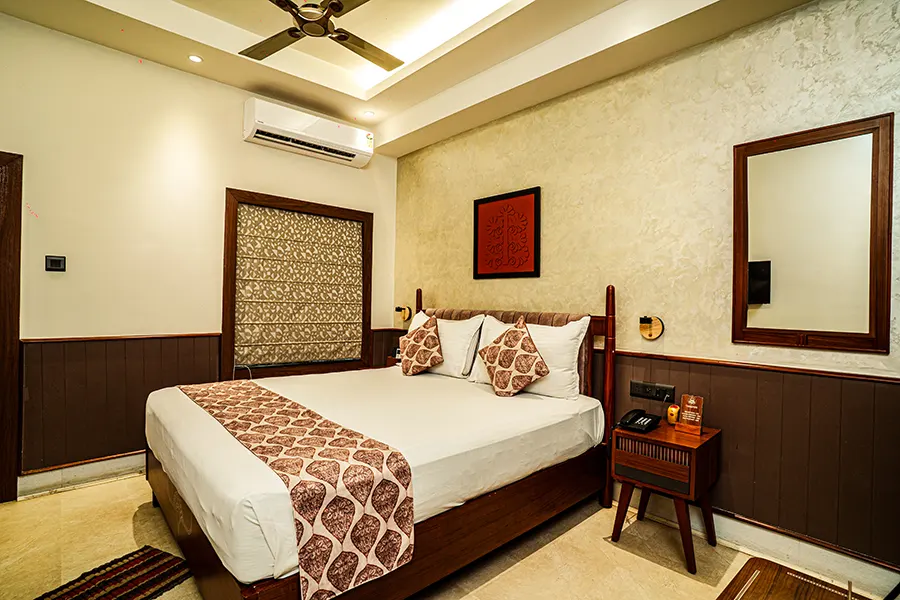
Tarapith

 Air Conditioning
Air Conditioning  Internet
Internet  Cafe
Cafe 






Tarapith Temple is dedicated to the goddess Tara, who is worshipped as a form of the goddess Kali. It is believed to be one of the 51 Shakti Peethas, which are the holiest shrines of the Hindu religion.The temple complex is quite large and includes several smaller temples, a pond, and a sacred cremation ground. The main deity of the temple, Tara, is represented by a silver idol seated on a lotus. The idol is adorned with ornaments and is considered to be extremely powerful and auspicious. The temple is also known for its unique rituals and practices, such as the offering of alcohol and meat to the goddess. These offerings are believed to appease the goddess and bring good fortune to the devotees.
Tarapith Burning Ghat is a sacred cremation ground located in the town of Tarapith in the Birbhum district of West Bengal, India. It is considered to be a very important and auspicious place for the Hindu religion, as it is believed that the ashes of the deceased who are cremated here are blessed by the goddess Tara and receive her divine protection and blessings.Overall, the Tarapith Burning Ghat is a significant and sacred place for Hindus and is believed to offer a gateway for the souls of the departed to attain liberation and spiritual transcendence.
Bamakhepa Temple is dedicated to the famous saint Bamakhepa, who was a devotee of the goddess Tara and a prominent figure in the history of Tarapith.Bamakhepawas a spiritual teacher and a practitioner of the Tantra tradition. He lived in the late 19th and early 20th centuries and was known for his unconventional and radical approach to spirituality, which often included practices such as drinking alcohol and eating meat as offerings to the goddess.The Bamakhepa Temple is considered to be a very important place of worship for Hindus and is visited by thousands of devotees every year. The temple is built on the site where Bamakhepa is believed to have attained Mahasamadhi, a state of spiritual liberation in which the soul is believed to merge with the divine.
Mallarpur Shiv Temple is believed to be more than 200 years old and is considered to be a significant religious site for the local community. It is built in a traditional Bengali style of architecture and features intricate carvings and designs that are typical of the region. It is believed to be a very powerful place of worship,especially popular during the festival of MahaShivratri. The main shrine of the temple is dedicated to Lord Shiva, who is worshipped in the form of a lingam, which is a symbol of his divine energy and power.
Birchandrapur Temple, located about 4.8 kilometers away from HSB Tarapith, is renowned as the birthplace of Nityananda Swami, the co-founder of the Vaishnav religion along with Shri Chityanyadev. One of the notable attractions in the area is the “Akali mandir” situated in Akalipur, near Bhadrapur, about 25 kilometers from Rampurhat. This temple is famous for its unique hexagonal structure and has a history of more than 300 years, with associations to Maharaja Nandakumar. It is believed that the ancestral house of Maharaja Nandakumar still exists in Akalipur. Currently, there is a Vaishnav religious center, including the ISCON temple, along with some old temples located in Birchandrapur.
Bakreswar or Bakreshwar is considered one of the 51 Sakthi Peethas in India. Bakreswar is renowned for its Bakreswar Temple, which is dedicated to Lord Bakranath (Shiva) and Goddess Kali. The temple is said to have been built at the spot where the forehead and brows of Goddess Sathi fell. The main temple is surrounded by several smaller shrines dedicated to Lord Shiva, and there is also a temple tank and a sacred tree. Bakreswar is also famous for its eight hot springs, each with varying temperatures. These springs are believed to have healing properties, and their water flows into a rivulet that eventually joins the Pamphra River. Every year, a large fair is held on the day of Shiva-Ratri, attracting many devotees and tourists to the area.
The ancient Kankaleshwari temple is famous for its nine-peaked structure and is also known as the Navaratna Temple. It is one of the 51 Shakti Peethas where it is believed that the waist of Devi Sati fell during the rampage of Lord Shiva. The temple is also referred to as Kamakshi Shaktipeeth, Kankaleshwari Devi temple, Kankal Bari, or Rakta Tola by the locals. The temple is noted for its depiction of the fearsome Kankaleshwari Kali, an impersonation of Devi Parvati in the Puranas.
Nalateswari Temple is a revered shrine and is considered one of the 51 Shaktipeethas, where parts of Sati’s body fell. The temple is renowned for its terracotta designs and unique ‘aatchala temple’ architecture. The shrine houses a 4-feet tall stone idol of the goddess Nalateswari with three eyes and a golden tongue. It is believed that she drinks water with a gulping sound. The temple also features a shrine dedicated to Lord Ganesha, constructed by Rani Bhavani of Natur.